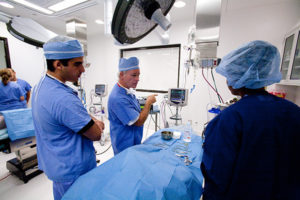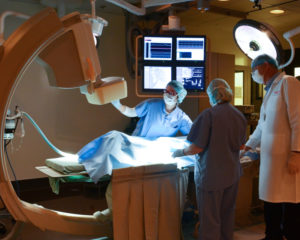When a medical product innovator has reached the point at which preclinical research is necessary to achieve the next milestone, they have already surmounted significant obstacles. They are nearer to realizing the possibility that their product will enter the market and patient care than ever before. Quality preclinical research begins with a robust preclinical study protocol. Preclinical study protocols can make or break a study, and are the foundation on which reports required by regulatory bodies are built. Our team of subject matter experts have outlined what to include in a preclinical study protocol.
Lay Summary
Much like an executive summary in a formal study report, the lay summary is a simple description of the test article, the need for testing it and the study design. The lay summary needs to be easy enough for a lay person to understand. It should include some statement about the disease condition the test article is targeted toward and a simple one line summary of the study. This is a requirement of the IACUC (the Institutional Animal Care and Use Committee).
Pro Tip: If well written, this section can easily be the foundation of an executive summary in your final report.
 Personnel
Personnel
Include roles of all individuals involved in the study such as study director, test facility management, QA, and all contributing scientists for e.g. pathologists, operators, veterinarians etc. Be sure to include all credentials. An important part of 21-CFR part 58 requirements is the use of “qualified personnel in the study.” Having credentials helps reviewers ultimately know that the individuals with the appropriate expertise performed the study.
Pro Tip: Make sure all contributing scientists sign the study protocol.
Objectives
List all specific objectives to include primary and secondary objectives (if any). Try not to summarize the text in this section. Discuss the measurement or success criteria for each objective. For example: “The objective of this study is to evaluate the safety of the test article. Safety was determined using the following criteria: absence of adverse events, 5% or less mortality, absence of thrombi.”
Pro Tip: Safety objectives should never be included in a Non-GLP study.
Test article
Describe the test article; your device or product, handling and storage conditions. Pictures are helpful.
Pro Tip: For GLP studies, keep in mind that the name of the test article in the protocol must match the name on the packaging.
Test and control article accountability
Describe where the test articles will be stored and disposition methods of unused test and control articles.
Pro Tip: For GLP studies > 4 weeks, describe how a representative test and control article from each lot will be archived.
Test Article Characterization
Per 21 CFR part 58.105: “(a) The identity, strength, purity, and composition or other characteristics which will appropriately define the test or control article shall be determined for each batch and shall be documented. Methods of synthesis, fabrication, or derivation of the test and control articles shall be documented by the sponsor or the testing facility. In those cases where marketed products are used as control articles, such products will be characterized by their labeling.” Ensure that this section includes how this information will be gathered for a GLP study.
Pro Tip: For a device this can be accomplished by sterility certificates, shelf life data, lot travelers and build records. Keep in mind the final lot numbers listed in the report must trace back through the lot travelers.
Accessories, equipment and surgical supplies
List all of the items that are accessories to the test article that may be used during the study. For example: catheters, introducer sheets, drills, etc.
Pro Tip: Keep this section as generic as possible. Depending on anatomy, sizes of accessory items may have to be adjusted. Keeping it generic, avoids deviations.
Description of the test system
Describe the species, strain, age, weight, gender and the number of animals utilized in the study. It should also include the source and experimental history. Be sure to include a justification for the species selection, use of animals and number of animals. Note: Some CROs have separate protocols for IACUC submission that include sections for animal welfare, minimization of pain and distress, and mandatory assurance statements to reduce, replace and refine the number of animals used in the study. However, a lot of CROs are leaning toward a combined protocol that improves both animal welfare and test article specific protocols. A combined protocol helps with a complete review and can make for easier report writing.
Pro Tip: Ensure that you don’t have a tight weight range for the animal. This allows for some flexibility at the time of enrollment due to fasting weight loss etc.
Study design
This is the most important section of a preclinical protocol. The study design describes the conduct of the study. This includes a paragraph description of the number of animals enrolled in the study, the procedures to be performed, implant, explant, follow up and any observations. This section also includes what happens after the study concludes: for example histopathology, clinical pathology and reports.
Pro Tip: For multiple timepoints, a table or flowchart to give a pictorial explanation of the design is extremely helpful.
Animal care
Healthy animals from approved vendors are a requirement of a good preclinical study. Descriptions should include acclimation and quarantine, feed, water intake, housing and the husbandry of the animals.
Pro Tip: Reference the CRO SOPs on animal care where possible. Lean on the CRO veterinarians for advice here.
Methods 
This section is crucial to the overall study. While it should include as much detail as possible, it should also have some generic elements to provide flexibility to the study protocol, so that it doesn’t lead to deviations. The section should include:
- Any randomization of the animals or the test and control articles,
- A description of the control of bias,
- Any exclusion criteria
- A step-by-step list of the procedures that will be conducted including any medications to be administered.
- Describe what happens after the implant of the test article. This includes a description of post-operative care, frequency of post-operative care and actions to be taken during unanticipated events. Include methods for: any clinical pathology, histopathology, gross pathology and shipping
Pro Tip: Include methods for how adverse events will be managed, and what will be considered an adverse event.
Report
The reports section should include whether a final report will be written or not. Describe in detail what information the final report will provide, and also include the different contributing scientist reports that will be included. Common contributing scientist reports include veterinary reports, histopathology and gross pathology reports, test article reports and even device evaluator reports.
Pro Tip: For a GLP study, a final report is necessary. Even if you don’t submit the study, the CRO is obligated to close out the study with the report or at a minimum an executive summary.
Study material disposition
Describe what will happen to the raw data after the study is completed. For GLP studies, the CFR requires that the study material be retained for a certain number of years. The protocol should accurately describe where and for how long the material should be stored.
Pro Tip: Refer to the CRO SOPs here. It’s best to ask for all material on a Non-GLP study to be returned.
Get in touch
Did you know that GCMI study directors can provide a review of your preclinical study protocol, even if you’re doing your study elsewhere? (Appropriate confidentiality rules apply).
If you are evaluating your readiness for preclinical work, let’s talk. Contact info@t3labs.org for more information.
